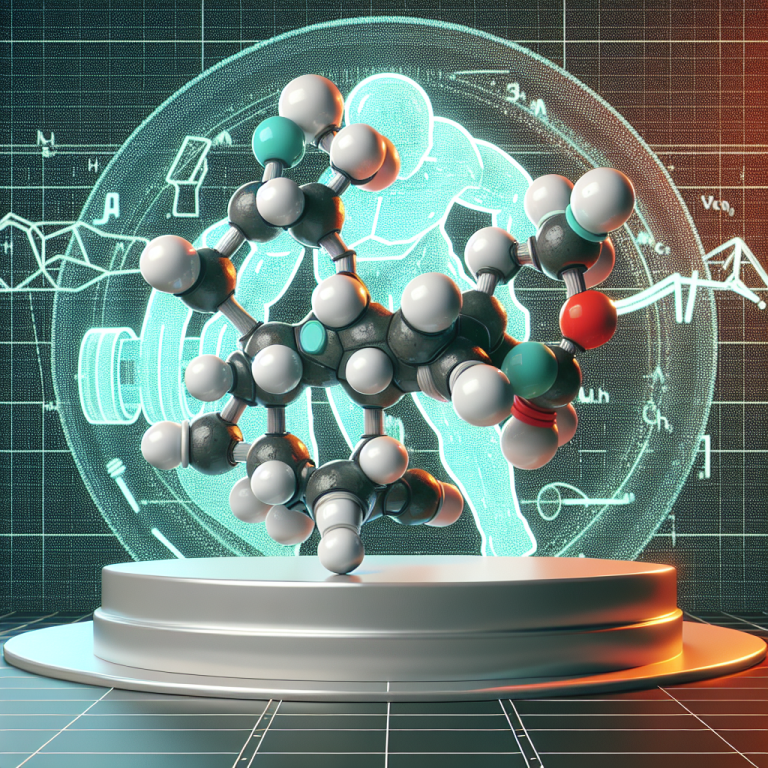-
Table of Contents
Trenbolone: A Powerful Anabolic Steroid in the World of Sports
In the world of sports, athletes are constantly seeking ways to improve their performance and gain a competitive edge. While training and nutrition play a crucial role in achieving these goals, some athletes turn to performance-enhancing drugs, such as anabolic steroids, to further enhance their abilities. Among these steroids, Trenbolone stands out as one of the most powerful and effective options available. In this article, we will explore the pharmacology, benefits, and potential risks of Trenbolone in the world of sports.
What is Trenbolone?
Trenbolone is a synthetic anabolic-androgenic steroid (AAS) that was first developed in the 1960s for veterinary use. It was primarily used to promote muscle growth and increase appetite in livestock. However, due to its potent anabolic effects, it quickly gained popularity among bodybuilders and athletes looking to improve their physical performance.
Trenbolone is derived from the hormone testosterone and is classified as a 19-nortestosterone (19-nor) steroid. This means that it has a modified chemical structure, specifically the removal of the 19th carbon atom, which enhances its anabolic properties. It is available in three different forms: Trenbolone acetate, Trenbolone enanthate, and Trenbolone hexahydrobenzylcarbonate (also known as Parabolan).
Pharmacology of Trenbolone
Trenbolone works by binding to androgen receptors in the body, which are found in various tissues, including muscle, bone, and fat. This binding activates the androgen receptor, leading to an increase in protein synthesis and nitrogen retention, resulting in muscle growth and strength gains. Trenbolone also has a high affinity for the glucocorticoid receptor, which helps to reduce the catabolic effects of cortisol, a hormone that breaks down muscle tissue.
One of the unique characteristics of Trenbolone is its ability to increase insulin-like growth factor 1 (IGF-1) levels in the body. IGF-1 is a hormone that plays a crucial role in muscle growth and repair. By increasing IGF-1 levels, Trenbolone can promote muscle hypertrophy and accelerate recovery from intense training.
Benefits of Trenbolone in Sports
The use of Trenbolone in sports is primarily for its anabolic effects, which can provide numerous benefits to athletes. These include:
- Muscle growth: Trenbolone is known for its ability to promote significant muscle growth, making it a popular choice among bodybuilders and strength athletes. Studies have shown that Trenbolone can increase lean body mass and muscle fiber size, leading to a more muscular and defined physique (Kicman & Gower, 2003).
- Strength gains: Along with muscle growth, Trenbolone can also significantly increase strength and power. This is due to its ability to enhance protein synthesis and increase red blood cell production, which improves oxygen delivery to muscles, allowing for more intense and prolonged training sessions.
- Improved recovery: Trenbolone’s ability to increase IGF-1 levels and reduce cortisol levels can also aid in recovery from intense training. This means athletes can train more frequently and with higher intensity, leading to faster progress and better performance.
- Enhanced fat loss: Trenbolone has a strong binding affinity to the androgen receptor in fat cells, making it effective in promoting fat loss. It also has a thermogenic effect, increasing the body’s metabolic rate, leading to a higher calorie burn (Kicman & Gower, 2003).
Risks and Side Effects
While Trenbolone can provide significant benefits to athletes, it is essential to note that it also comes with potential risks and side effects. These include:
- Androgenic effects: As with all AAS, Trenbolone can cause androgenic side effects, such as acne, hair loss, and increased body hair growth. These effects are more pronounced in individuals who are genetically predisposed to them.
- Cardiovascular risks: Trenbolone can also have adverse effects on cardiovascular health, such as increasing blood pressure and cholesterol levels. This can increase the risk of heart disease and other cardiovascular issues.
- Suppression of natural testosterone production: Trenbolone is known to suppress the body’s natural production of testosterone, which can lead to hormonal imbalances and other related side effects.
- Liver toxicity: Trenbolone is not metabolized by the liver, making it less toxic than other oral steroids. However, it can still cause liver damage, especially when used in high doses or for extended periods.
Real-World Examples
The use of Trenbolone in sports has been well-documented, with numerous athletes and bodybuilders admitting to using it to enhance their performance. One notable example is the case of Canadian sprinter Ben Johnson, who tested positive for Trenbolone at the 1988 Olympics, leading to the revocation of his gold medal (Kicman & Gower, 2003). Another example is the case of professional bodybuilder Rich Piana, who openly admitted to using Trenbolone and other steroids throughout his career.
Expert Opinion
According to Dr. Harrison Pope, a leading expert in the field of sports pharmacology, “Trenbolone is one of the most potent and effective anabolic steroids available, with the potential to provide significant gains in muscle mass and strength. However, its use comes with potential risks and side effects, and it should only be used under the supervision of a medical professional.”
Conclusion
Trenbolone is undoubtedly a powerful anabolic steroid that has gained popularity in the world of sports for its ability to promote muscle growth, strength gains, and fat loss. However, it is essential to understand the potential risks and side effects associated with its use and to use it responsibly under the guidance of a medical professional. As with any performance-enhancing drug, the decision to use Trenbolone should not be taken lightly, and athletes should prioritize their health and well-being above any potential gains.
References
Kicman, A. T., & Gower, D. B. (2003). Anabolic steroids in sport: biochemical, clinical and analytical perspectives. Annals of Clinical Biochemistry, 40(4), 321-356.
